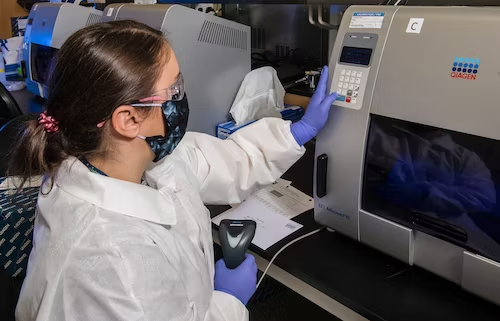Digital radiography is becoming increasingly popular in industrial settings to conduct non-destructive tests. Digital radiography uses a digital imaging device, such as a CCD camera or photodiode array, to capture an image of the tested object. This image is then transferred to a computer and analyzed to detect any flaws or changes in the material. Digital radiography offers several advantages over traditional radiography. For example, the images can be immediately viewed on a computer screen after they are taken. This chapter delves into the potential of Digital Radiography in an industrial setting while shedding light on its future trajectory.
1. Real-Time Analysis
One of the most compelling benefits of digital radiography in an industrial setting is the capability for real-time analysis. Unlike conventional testing methods that often require lengthy processing times, digital radiography affords immediate access to high-resolution, clear images, allowing for rapid identification and analysis of potential defects or anomalies. This feature proves particularly advantageous in time-sensitive industrial contexts, where delays can result in substantial production losses.
Moreover, real-time analysis facilitates prompt remedial action, minimizing the impact and spread of detected issues. Companies use digital radiography in NDT inspections for business projects that require rapid decision-making, such as when the safety of a structure is at stake. Digital radiography’s capacity for on-the-spot analysis ensures the most up-to-date information is available to identify risk factors before any costly damage can be caused.
2. Cost Savings and Flexibility
In addition to real-time analysis, digital radiography offers industrial settings a variety of cost-saving advantages. For instance, the cost of film for traditional radiography is avoided altogether when using digital radiography. Furthermore, since no physical film needs to be developed and processed, labor costs associated with these tasks are also eliminated.
Additionally, digital radiography allows for increased flexibility due to its automated capabilities. The imaging process is automated, and no human intervention is required. This means that the same equipment can be used to inspect different materials or objects with minimal setup time, saving companies significant costs in the long run.
3. Integration With AI
Machine learning and AI are increasingly integrated with digital radiography for more efficient analysis of images. Combining these two technologies makes it possible to quickly analyze large amounts of data to detect subtle changes or anomalies that would otherwise go unnoticed with traditional methods.
AI-assisted digital radiography is already being implemented in industrial settings. For example, AI algorithms detect tiny cracks or corrosion that would be difficult for the human eye to identify. This technology has been proven to improve the accuracy and speed of inspections significantly.
4. Increased Safety
Its non-invasive nature renders it a safer alternative to traditional inspection methods that may necessitate direct contact or exposure to potentially hazardous substances or environments. Providing the ability to inspect components remotely reduces the risk of worker exposure to harmful conditions, particularly in industries handling hazardous materials or operating in extreme environments.
Furthermore, digital radiography’s capacity to detect even minor anomalies or defects early in their development can prevent catastrophic failures, thus providing an additional layer of safety. Its integration with AI further bolsters this safety benefit, as AI algorithms can discern subtle changes or abnormalities that may elude human inspectors, enabling remedial action to be taken promptly.
5. Remote Testing
Digital radiography also provides the ability to conduct remote tests, making it particularly useful in cases where direct access to a site is difficult or impossible. This feature enables industrial settings to inspect components at locations that would otherwise be inaccessible due to geographical distance or security concerns.
Aside from enabling remote testing, digital radiography’s capacity for automated inspections makes it possible for companies to monitor vast numbers of objects or components with minimal manpower. This capability facilitates more efficient and accurate inspections due to the lack of human bias or fatigue associated with manual inspections, enabling industrial settings to identify defects quickly and accurately.
6. Sustainability
With no chemicals or hazardous materials needed for the imaging process, it reduces waste and pollution that traditional inspection methods would otherwise cause. Additionally, since the images are stored digitally, there is no need to store physical films, eliminating the need for large amounts of film storage space. This feature contributes to a more sustainable approach to industrial testing and inspections.
Plus, digital radiography facilitates the reuse of components, as images can be used multiple times to assess the condition of a component. This helps reduce waste and ensures that components are not needlessly discarded or replaced due to false positives from manual testing methods.
Digital Radiography is an invaluable tool for industrial settings, thanks to its capability for real-time analysis, cost-saving advantages, integration with AI, and increased safety. Furthermore, its capacity for remote testing and sustainability makes it an attractive option for any company looking to reduce waste and increase efficiency in their industrial operations. By leveraging the power of digital radiography, companies can be assured that they are receiving accurate results without compromising on safety or the environment.
Lucas Noah, armed with a Bachelor’s degree in Information & Technology, stands as a prominent figure in the realm of tech journalism. Currently holding the position of Senior Admin, Lucas contributes his expertise to two esteemed companies: OceanaExpress LLC and CreativeOutrank LLC. His... Read more
